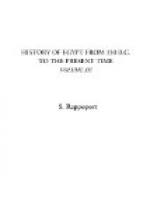The Koptic community supports one thousand schools for elementary education, twenty-seven primary boys’ and girls’ schools, and one college. The teaching of the Koptic language in the schools is now compulsory; the subjects taught, and the methods of teaching them, are the same as in vogue in other countries. Fifty per cent, of the Koptic male population can read and write well. The indigenous tribunals of the country are called Mehkemmehs, and are presided over by cadis. At the present time they retain jurisdiction in matters of personal law relating to marriage succession, guardianship, etc. Beyond this sphere they also fulfil certain functions connected with the registration of title of land. In matters of personal law, however, the native Christians are subject to their own patriarchs or other religious leaders.
In other matters, natives are justiciable before the so-called native tribunals, established during the period of the British occupation. These consist of forty-six summary tribunals, each presided over by a single judge, who is empowered to exercise jurisdiction in matters up to $500 in value, and criminal jurisdiction in offences punishable by fine or by imprisonment of three years or less. Associated with these are seven central tribunals, each chamber consisting of three judges. There is also a court of appeal in Cairo, one-half of its members being Europeans. In criminal matters there is always a right to appeal, sometimes to the court of appeal, sometimes to a central tribunal. In civil matters an appeal lies from a summary tribunal to a central tribunal in matters exceeding $500 in value, and from the judgment of a central tribunal in the first instance to the court of appeal in all cases. The prosecution in criminal matters is entrusted to the parquet, which is directed by a procurer-general; the investigation of crime is ordinarily conducted by the parquet, or by the police under its direction. Offences against irrigation laws, which were once of such frequent occurrence and the occasion of injustice and lawlessness, are now tried by special and summary administration tribunals.




